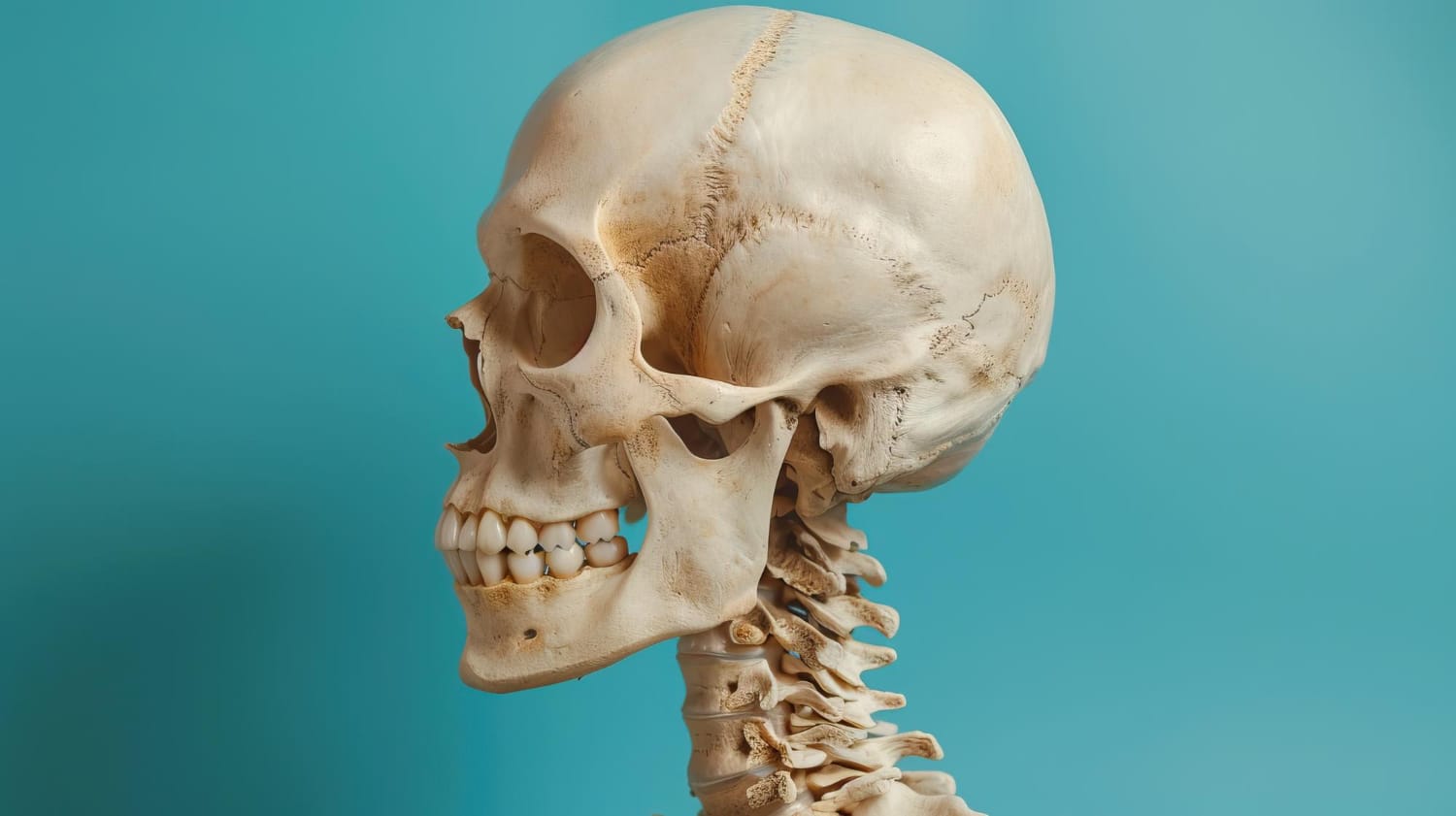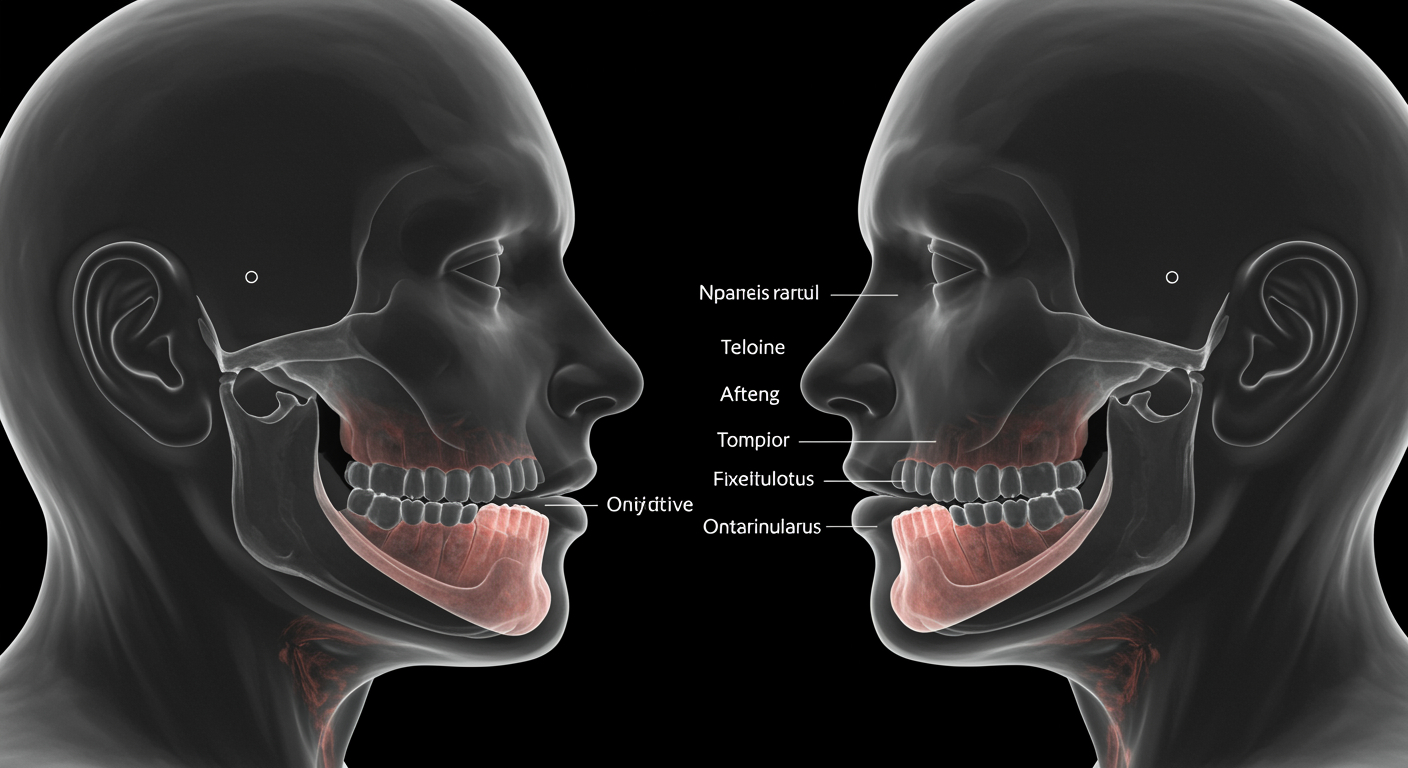Are you curious to know when your jaw stops developing? Understanding the age at which jaw growth ends is essential for various reasons, such as orthodontic treatment planning, facial aesthetics, and addressing functional concerns. In this article, we will delve into the topic and provide you with insights into jaw development.
While each individual is unique, it is generally accepted that jaw growth ceases around the age of 16-18. During childhood and adolescence, the jaw grows in response to hormonal changes and the eruption of permanent teeth. However, by late adolescence, most individuals have finished growing, and the jawbones have reached their full size.
It is important to note that even after the jaw growth stops, changes in facial appearance can continue due to factors such as aging, tooth loss, and dental problems. Understanding the dynamics of jaw growth and its impact on facial development is crucial for dentists, orthodontists, and individuals seeking to improve their smile and overall facial aesthetics.
Read on to discover more about when jaw growth ends and its implications for orthodontic treatment, facial appearance, and overall oral health.
The importance of proper jaw development
The proper development of the jaw is crucial for various aspects of our overall health and well-being. The jaw, also known as the mandible, plays a vital role in a wide range of functions, including chewing, speaking, swallowing, and even breathing.
When the jaw develops correctly, it provides a stable foundation for the teeth, allowing for proper alignment and a balanced bite. This, in turn, facilitates efficient chewing and swallowing, which are essential for maintaining good digestive health and proper nutrition. Additionally, a well-developed jaw can contribute to the overall facial aesthetics, creating a harmonious and balanced appearance.
Conversely, when the jaw fails to develop properly, it can lead to a range of issues, such as malocclusion (misaligned bite), temporomandibular joint (TMJ) disorders, and even breathing difficulties. These problems can have far-reaching consequences, affecting not only the individual’s physical health but also their emotional well-being and quality of life.
Factors that affect jaw growth
The development of the jaw is a complex process that is influenced by a variety of factors, both genetic and environmental. Understanding these factors is crucial in determining when the jaw growth ends and how it can be managed.
One of the primary factors that influence jaw growth is genetics. The genes we inherit from our parents play a significant role in determining the size, shape, and overall structure of the jaw. Certain genetic conditions, such as cleft lip and palate, can also affect the proper development of the jaw.
In addition to genetics, environmental factors, such as nutrition, physical activity, and oral habits, can also impact jaw growth. For example, a diet lacking in essential nutrients, particularly during the critical developmental stages, can hinder the proper growth and development of the jaw. Similarly, habits like thumb-sucking or tongue-thrusting can exert pressure on the jaw, leading to misalignment or other developmental issues.
Hormonal changes during puberty and adolescence also play a crucial role in the timing and rate of jaw growth. The surge of hormones, such as growth hormone and sex hormones, can stimulate the growth of the jawbones, causing them to expand and develop. Understanding the relationship between these hormonal changes and jaw growth is essential for determining the age at which the jaw stops developing.
Signs that jaw growth is complete
Determining the exact age at which jaw growth ends can be challenging, as it can vary from individual to individual. However, there are several signs that can indicate when the jaw has reached its full development.
One of the most reliable indicators of completed jaw growth is the closure of the growth plates, also known as the epiphyseal plates, located at the ends of the jawbones. These growth plates are responsible for the lengthening of the bones during childhood and adolescence. As the individual matures, the growth plates gradually close, signaling the end of bone growth.
Another sign of completed jaw growth is the eruption of the third molars, commonly referred to as wisdom teeth. These teeth typically erupt between the ages of 17 and 25, and their eruption is often considered a marker of the end of jaw growth. However, it’s important to note that the timing of wisdom tooth eruption can vary, and some individuals may have their wisdom teeth removed before they fully erupt.
Additionally, changes in facial features, such as a decrease in the prominence of the chin or a more defined jawline, can indicate that the jaw has reached its full development. These subtle changes in facial appearance are often observed during the late teenage years and early adulthood.
It’s important to note that while these signs can provide a general timeline for when jaw growth ends, individual variations can occur. Some individuals may experience completed jaw growth earlier or later than the typical age range of 16-18 years. Regular dental check-ups and monitoring by a qualified healthcare professional can help determine the specific timeline for each individual.
The role of genetics in jaw development
Genetics play a significant role in the development and growth of the jaw. The genes we inherit from our parents can influence the size, shape, and overall structure of the jawbones, as well as the timing of jaw growth.
One of the key genetic factors that impact jaw development is the inheritance of certain craniofacial disorders, such as cleft lip and palate. These conditions can result in abnormal jaw growth and development, leading to a range of functional and aesthetic issues. Individuals with these genetic conditions may require specialized treatment, including orthodontic intervention and even surgical procedures, to address the underlying jaw-related problems.
In addition to craniofacial disorders, more subtle genetic variations can also affect the growth and development of the jaw. For example, some individuals may inherit a tendency for a smaller or larger jaw, which can contribute to malocclusion (misaligned bite) or other dental and facial irregularities. Understanding the genetic factors involved in jaw development can help healthcare professionals provide more personalized and effective treatment plans.
It’s important to note that while genetics play a significant role, environmental factors, such as nutrition, physical activity, and oral habits, can also influence the growth and development of the jaw. A combination of genetic predisposition and environmental influences can ultimately determine the final shape and size of an individual’s jaw.
Common jaw development issues
While the majority of individuals experience normal jaw development, there are several common issues that can arise during the growth and maturation of the jaw. Understanding these issues is crucial for early identification and appropriate intervention.
One of the most prevalent jaw development issues is malocclusion, which refers to the misalignment of the upper and lower jaws. This can result in a variety of bite problems, such as overbite, underbite, crossbite, or open bite. Malocclusion can be caused by a range of factors, including genetic predisposition, habits like thumb-sucking, and even environmental factors like trauma or injuries to the jaw.
Another common issue is the improper eruption or positioning of the wisdom teeth, also known as third molars. When these teeth do not have enough space to erupt properly, they can become impacted, causing pain, infection, and even damage to the surrounding teeth and jawbone. In such cases, the extraction of the wisdom teeth may be necessary to prevent further complications.
Temporomandibular joint (TMJ) disorders are also a common problem related to jaw development. These disorders involve the joint that connects the lower jaw to the skull and can result in pain, stiffness, and difficulty opening the mouth. TMJ disorders can be caused by a variety of factors, including trauma, arthritis, and even stress-related clenching or grinding of the teeth.
In some cases, individuals may experience underdevelopment or overgrowth of the jawbone, leading to conditions like micrognathia (small lower jaw) or prognathism (protruding lower jaw). These issues can have significant impacts on facial aesthetics, as well as functional problems related to chewing, speaking, and breathing. Specialized treatment, such as orthodontic intervention or even jaw surgery, may be necessary to address these developmental concerns.
Treatment options for jaw development problems
When issues arise in the development of the jaw, there are various treatment options available to address the underlying problems and improve overall oral health and facial aesthetics. The specific treatment approach will depend on the nature and severity of the jaw development issue.
One of the most common treatment options for jaw development problems is orthodontic intervention. Orthodontists can use a variety of appliances, such as braces, retainers, or functional appliances, to guide the growth and alignment of the jaw and teeth. This can help correct malocclusion, improve bite function, and enhance facial appearance. In some cases, the orthodontic treatment may be combined with other interventions, such as tooth extractions or even surgical procedures.
For individuals with more severe jaw development issues, such as underdevelopment or overgrowth of the jawbone, orthognathic surgery may be necessary. This type of surgical procedure involves the repositioning or reshaping of the jawbones to improve their alignment and function. Orthognathic surgery is often performed in conjunction with orthodontic treatment to achieve optimal results.
In cases of impacted or misaligned wisdom teeth, the extraction of these teeth may be recommended. This can help prevent further complications, such as infection, damage to surrounding teeth, and the development of cysts or tumors. The timing of wisdom tooth extraction is often a crucial consideration, as it can impact the overall development and alignment of the jaw.
In addition to these more invasive treatment options, there are also non-surgical approaches that can help address jaw development issues. These may include the use of oral appliances, such as splints or mouthguards, to manage TMJ disorders or correct minor bite misalignments. Behavioral interventions, such as stress management techniques or the modification of oral habits, can also play a role in addressing certain jaw development problems.
The choice of treatment will depend on the specific needs and circumstances of the individual, as well as the recommendations of the healthcare team, which may include dentists, orthodontists, and oral surgeons. Timely intervention and a comprehensive approach to managing jaw development issues can help ensure optimal oral health and facial aesthetics throughout a person’s lifetime.
Orthodontic intervention for jaw growth
Orthodontic treatment plays a crucial role in addressing issues related to jaw growth and development. Orthodontists, who are specialized dentists, utilize a range of techniques and appliances to guide the growth and alignment of the jaw and teeth, ensuring optimal function and aesthetics.
One of the primary goals of orthodontic intervention is to correct malocclusion, or misalignment of the bite. This can involve the use of braces, retainers, or other appliances to gradually move the teeth and jaws into their proper positions. By addressing issues like overbite, underbite, or crossbite, orthodontic treatment can improve chewing function, speech, and overall facial appearance.
In some cases, orthodontic treatment may be combined with other interventions, such as the extraction of teeth or even surgical procedures, to address more complex jaw development problems. For example, in individuals with severe jaw discrepancies or growth issues, orthognathic surgery may be necessary to reposition or reshape the jawbones, which can then be followed by orthodontic treatment to refine the final alignment.
Timing is a critical factor in orthodontic intervention for jaw growth. Orthodontists often recommend starting treatment during the early stages of jaw development, typically around the ages of 7-14, when the jaw and teeth are still actively growing and changing. This allows for more effective guidance and shaping of the jaw, as well as the prevention of more severe problems from developing.
However, it’s important to note that orthodontic treatment can be beneficial at any age, even in adulthood. While the timing of treatment may vary, the goal remains the same: to achieve a healthy, functional, and aesthetically pleasing bite. By working closely with their orthodontist, individuals can ensure that their jaw growth and development are properly addressed, leading to improved oral health and a confident, beautiful smile.
Jaw growth in adults
While the majority of jaw growth and development occurs during childhood and adolescence, it’s important to understand that changes in the jaw can continue to occur even in adulthood. These changes can be influenced by a variety of factors, including aging, tooth loss, and dental problems.
As we age, the jawbones can undergo subtle changes in their shape and size. For example, the chin may become less prominent, and the jawline may appear more defined. These changes are a natural part of the aging process and are not necessarily indicative of a problem with jaw development.
Another factor that can impact jaw growth in adults is tooth loss. When teeth are missing, the jawbone in that area may begin to resorb, or shrink, due to the lack of stimulation from the missing teeth. This can lead to changes in the overall shape and position of the jaw, potentially affecting facial appearance and chewing function.
Dental problems, such as gum disease or tooth decay, can also have an impact on jaw growth and development in adults. These issues can cause inflammation and damage to the jawbone, leading to changes in its structure and position. In some cases, these dental problems may require extensive treatment, including tooth extractions or even surgical intervention.
While the overall growth and development of the jaw typically cease by the late teenage years, it’s important for adults to maintain regular dental check-ups and to address any oral health concerns that may arise. By doing so, they can help ensure the continued health and stability of their jawbones, preserving their facial aesthetics and overall oral function throughout their lifetime.
Conclusion and maintaining jaw health
In conclusion, understanding the age at which jaw growth ends is crucial for various aspects of dental and overall health. While the general consensus is that the jaw stops developing around the ages of 16-18, individual variations can occur, and it’s essential to work closely with healthcare professionals to determine the specific timeline for each person.
Proper jaw development is vital for maintaining good oral health, facial aesthetics, and overall quality of life. Factors such as genetics, nutrition, and oral habits can all play a role in the growth and maturation of the jaw. When issues arise, there are various treatment options available, including orthodontic intervention, orthognathic surgery, and the extraction of wisdom teeth.
Even after the jaw has finished growing, it’s important to maintain good oral hygiene and address any dental problems that may arise. Regular check-ups with a dentist or orthodontist can help identify and address any changes in the jaw, ensuring that it continues to function optimally throughout an individual’s lifetime.
By understanding the importance of proper jaw development and the various factors that can influence it, individuals can take proactive steps to maintain their oral health and achieve a balanced, aesthetically pleasing facial appearance. With the right care and attention, the jaw can continue to serve as a strong and reliable foundation for a lifetime of healthy, confident smiles.





